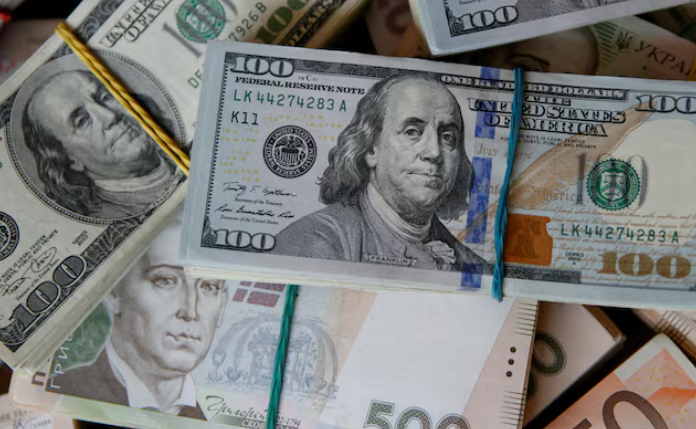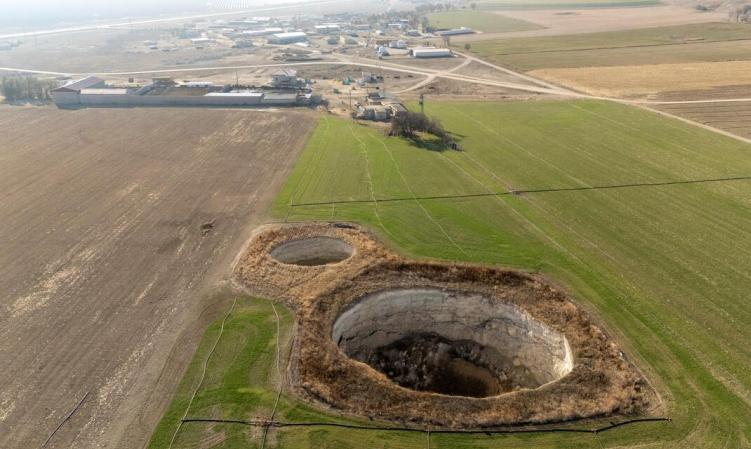
Andrei Pisny, governor of the Central Bank of Ukraine, recently revealed to international media that Ukraine is evaluating the possibility of pegging its currency, the hryvnia, to the euro. This statement marks that Ukraine's monetary system may usher in a historic change. At a time when the global trade pattern is accelerating and the Russian-Ukrainian conflict has lasted for four years, Ukraine is trying to reconstruct its economic security system through monetary strategic adjustments, reflecting the complex game between monetary sovereignty and geopolitics in Eastern European countries in the post-Cold War era.
Since the advent of the hryvnia in 1996, Ukraine has long used the US dollar as a currency anchor benchmark. This choice stems from the dominant position of the US dollar in international trade and is also subject to Ukraine's dependence on US security commitments. However, the outbreak of the Russian-Ukrainian conflict in 2022 completely broke this balance: the volatility of US military aid to Ukraine exposed the fragility of the US dollar system, and the Trump administration's threat to cut off funds further highlighted the strategic risks of monetary sovereignty. Data shows that in 2023, the US dollar accounted for as much as 65% of Ukraine's foreign exchange reserves, but this high dependence has become the "Achilles heel" of economic security in the context of conflict.
The logic of the euro replacing the dollar is based on three realities: first, the EU has become Ukraine's de facto defense supporter. In 2024, the total amount of EU military aid to Ukraine reached 28 billion euros, far exceeding the US's 15 billion US dollars; second, Ukraine's accession to the EU is accelerating. European Commission President von der Leyen has made a clear promise that if the reform process goes smoothly, Ukraine is expected to complete its accession by 2030; third, the eurozone's economic resilience is evident. In 2024, the eurozone's GDP growth rate reached 2.1%, while the United States was only 1.6%, and the stability advantage of the euro as a reserve currency gradually emerged.
Ukraine's currency shift is essentially a redrawing of the geo-economic map. From a historical perspective, the choice of currency anchoring often reflects the sphere of influence of major powers: Ukraine used the ruble in the Tsarist era, turned to the US dollar after the disintegration of the Soviet Union, and now the euroization process marks the substantial penetration of European influence. Behind this transformation is the implicit confrontation between the EU's "eastward expansion strategy" and Russia's "sphere of influence theory".
For the EU, absorbing Ukraine's monetary system has three strategic values: first, it consolidates the economic foundation of the defense alliance, second, it expands the eurozone's peripheral influence, and finally, it builds a strategic fulcrum to counter the hegemony of the US dollar. Data show that if Ukraine successfully joins the euro system, it will directly increase the euro's share of global foreign exchange reserves by 0.5 percentage points, which poses a structural challenge to the international monetary system dominated by the US dollar.
Despite the promising prospects, Ukraine's currency shift still faces severe challenges. The primary risk lies in the evolution of the Russian-Ukrainian conflict: if the war escalates, it may lead to capital flight, and the peg of the hryvnia to the euro may exacerbate exchange rate fluctuations. Secondly, there is huge pressure to adjust the economic structure. In 2024, Ukraine's fiscal deficit rate will reach 12%, relying on $55 billion in external financing. The reform of the monetary system needs to be promoted simultaneously with fiscal austerity policies.
The deeper test lies in the art of balancing monetary sovereignty. Over-reliance on the euro may make Ukraine an economic vassal of the European Union, but complete autonomy will make it difficult to resist geo-economic risks. The "gradual peg" plan proposed by the Central Bank of Ukraine is quite wise: the euro anchoring will be achieved in three stages - the technical framework will be established in 2025, the dual currency basket will be formed in 2027, and the full conversion will be completed in 2030. This strategy not only avoids shock reforms, but also reserves space for strategic adjustments.
The Ukrainian currency's shift to the euro is essentially a search for new economic security coordinates in the reconstruction of the global order. This silent currency revolution not only concerns the future of a country's monetary system, but also reflects the deep logic of the evolution of the international monetary system in the post-dollar era. As the exchange rate curves of the hryvnia and the euro gradually approach each other, Eastern Europe is writing a new geo-economic narrative.

Due to the continuous decrease in rainfall and the rapid drop in groundwater levels, several large sinkholes have successively appeared in several agricultural areas in central Turkey in recent years, causing great concern among local farmers and environmental experts.
Due to the continuous decrease in rainfall and the rapid dr…
The Prime Minister's Office of Israel said Hamas attacked I…
Fourteen countries including the United Kingdom, France and…
The US Department of Justice said on Wednesday (December 24…
The Japanese government has submitted a draft, planning to …
On December 25th local time, NVIDIA announced a technology …